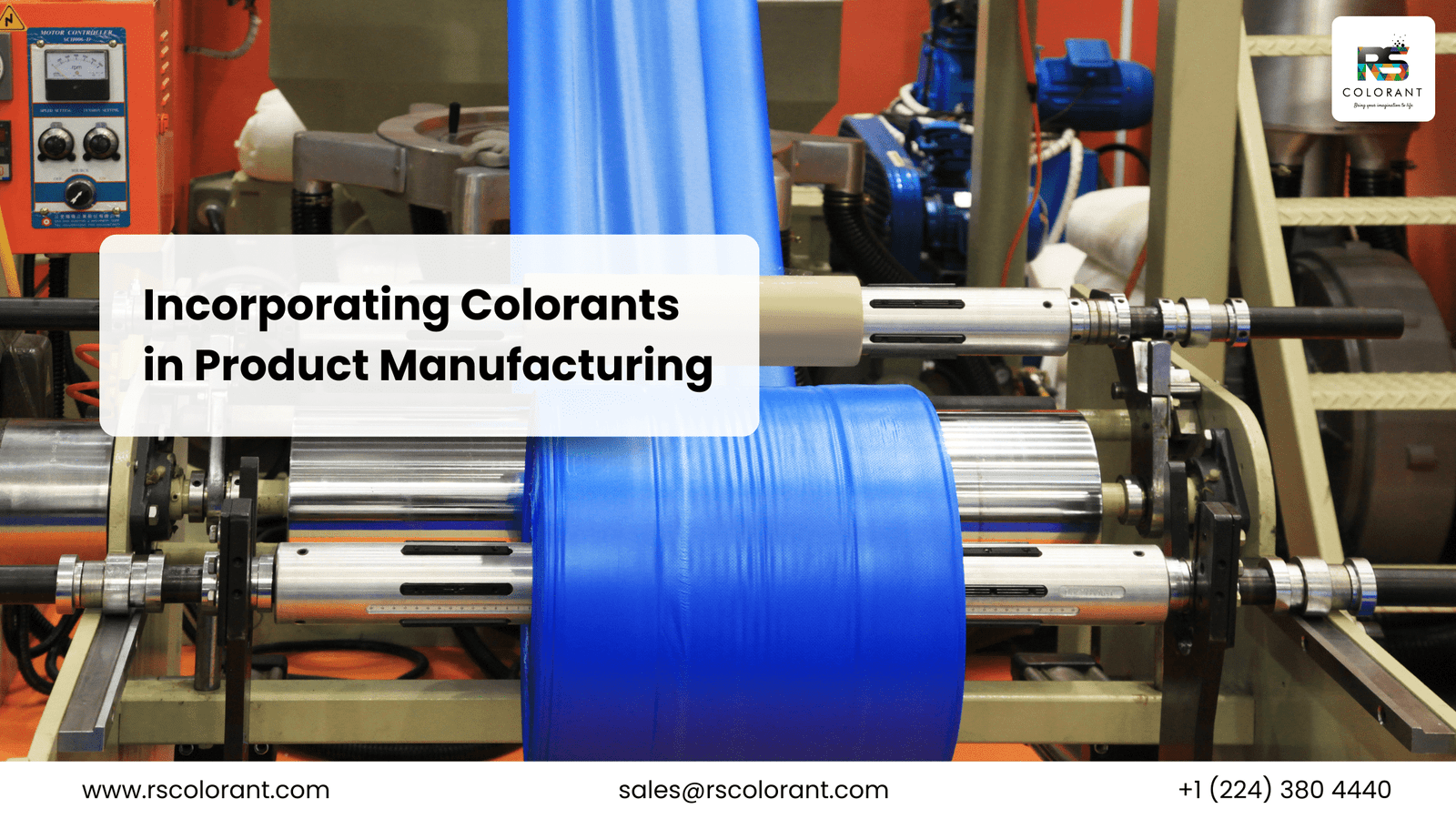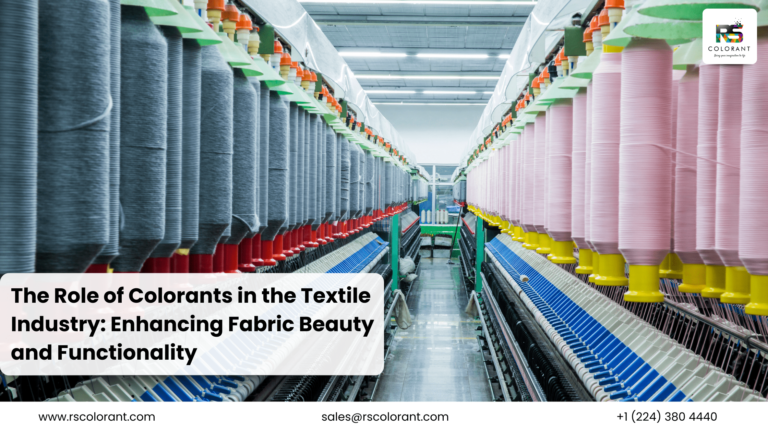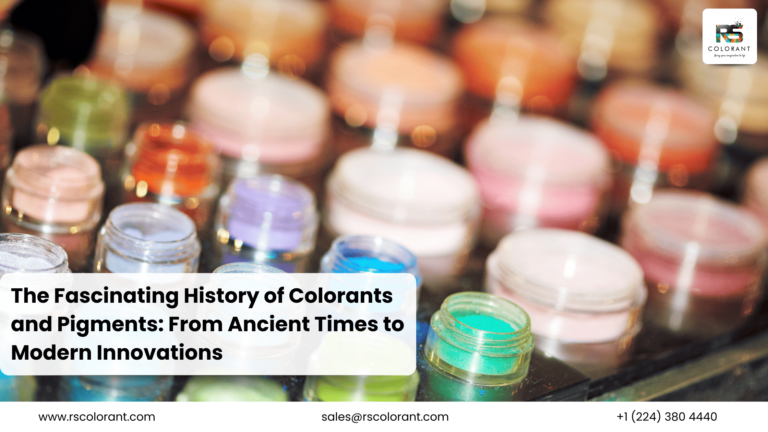The Process of Incorporating Colorants in Product Manufacturing
Color plays a crucial role in the manufacturing of products across various industries, from cosmetics and textiles to plastics and food. The process of incorporating colorants into product manufacturing is a meticulous and highly specialized field that requires a deep understanding of materials, chemistry, and market demands. RS Colorant, a leading provider of high-quality colorants, is at the forefront of this industry, delivering solutions that enhance product appeal and performance. In this comprehensive guide, we will delve into the intricacies of incorporating colorants in product manufacturing, highlighting the techniques, challenges, and innovations driving this essential process.
Understanding Colorants
Colorants are substances used to impart color to materials and products. They can be classified into two main categories: dyes and pigments. Dyes are soluble substances that provide color through a solution, while pigments are insoluble particles that disperse in a medium to give color. Each type has its specific applications, advantages, and challenges.
Types of Colorants
- Organic Dyes: These are derived from natural sources or synthesized chemically. They are widely used in textiles, inks, and certain plastics due to their vibrant hues and solubility.
- Inorganic Pigments: These pigments, often derived from minerals, are known for their durability, heat stability, and resistance to light and chemicals. Common applications include paints, coatings, and plastics.
- Specialty Colorants: These include fluorescent, phosphorescent, and thermochromic colorants that respond to changes in light or temperature. They are used in safety products, novelty items, and advanced materials.
The Process of Incorporating Colorants
The process of incorporating colorants into products involves several steps, each critical to achieving the desired color and performance characteristics. Here, we explore these steps in detail.
1. Selection of Colorants
The first step in the process is the selection of appropriate colorants based on the product requirements. Factors such as the type of material, intended use, desired color, and regulatory compliance influence the choice of colorants.
- Material Compatibility: The colorant must be compatible with the base material, ensuring it can be evenly distributed and bonded without affecting the material’s properties.
- Performance Requirements: Considerations include lightfastness, heat stability, and resistance to chemicals, which are crucial for applications in harsh environments.
- Regulatory Compliance: Industries such as food, cosmetics, and pharmaceuticals have stringent regulations governing the use of colorants. Ensuring compliance is vital to avoid legal issues and ensure consumer safety.
2. Preparation and Dispersion
Once the colorant is selected, it must be properly prepared and dispersed within the base material. This step is critical to achieving uniform color and preventing defects such as streaking or uneven coloration.
- Pigment Dispersion: For pigments, achieving a fine and uniform dispersion is essential. This often involves milling processes where pigment particles are broken down to the desired size and evenly distributed within a carrier medium.
- Dye Solubilization: Dyes must be dissolved in a solvent or vehicle to create a homogenous solution. This step may require heating, stirring, or the addition of dispersing agents.
3. Mixing and Blending
The prepared colorant is then mixed with the base material. The mixing process must ensure complete integration of the colorant without altering the material’s properties.
- Mechanical Mixing: Techniques such as high-shear mixing, extrusion, or roll milling are used depending on the material and desired outcome. These methods help achieve a consistent color throughout the product.
- Additive Compatibility: During mixing, other additives (e.g., stabilizers, fillers) may be incorporated. Ensuring compatibility between these additives and the colorant is essential to maintain product quality.
4. Quality Control and Testing
After mixing, rigorous quality control measures are implemented to ensure the color meets specifications and performance standards.
- Color Matching: Spectrophotometers and colorimeters are used to measure the color and ensure it matches the desired shade. Adjustments may be made to the formulation to achieve precise color matching.
- Performance Testing: The colored material undergoes various tests to assess its durability, lightfastness, and resistance to environmental factors. This step is crucial for applications where the product is exposed to harsh conditions.
5. Application and Processing
The final colored material is then processed into the end product. This stage varies significantly depending on the industry and product type.
- Injection Molding and Extrusion: In the plastics industry, colored pellets are melted and shaped into products using injection molding or extrusion techniques.
- Printing and Coating: For textiles and paper, the colored material may be applied through printing, coating, or dyeing processes.
- Casting and Molding: In the manufacturing of cosmetics, colored ingredients are blended and molded into the final product form.
Challenges in Incorporating Colorants
The process of incorporating colorants is not without its challenges. Manufacturers must navigate technical, regulatory, and market-driven hurdles to achieve optimal results.
Technical Challenges
- Dispersion Stability: Ensuring stable dispersion of pigments over time can be challenging, especially in complex formulations.
- Color Consistency: Achieving consistent color across different batches and production runs requires precise control and monitoring.
- Material Interactions: Interactions between colorants and other material components can lead to issues such as color shift or degradation.
Regulatory Challenges
- Compliance: Adhering to regulations regarding the use of colorants in specific industries (e.g., food, cosmetics) is essential but can be complex and time-consuming.
- Environmental Impact: Addressing environmental concerns related to the use of certain colorants and production processes is increasingly important.
Market Challenges
- Consumer Preferences: Staying ahead of changing consumer preferences and trends in color can be challenging but is crucial for market success.
- Cost Considerations: Balancing cost and quality is always a concern, as high-quality colorants may come at a premium.
Innovations in Colorant Technology
The field of colorants is continuously evolving, with innovations aimed at improving performance, sustainability, and versatility.
Sustainable Colorants
There is a growing emphasis on developing eco-friendly colorants derived from natural sources or utilizing green chemistry principles. These innovations help reduce environmental impact and meet consumer demand for sustainable products.
Advanced Colorant Technologies
- Nano-pigments: These ultra-fine pigments offer superior color strength and stability, enhancing performance in various applications.
- Functional Colorants: Colorants with additional functionalities, such as UV protection, antimicrobial properties, or temperature sensitivity, are gaining traction.
Digital Color Matching
Advancements in digital technology have revolutionized color matching and formulation. High-precision instruments and software enable manufacturers to achieve exact color matches efficiently and consistently.
Conclusion
The process of incorporating colorants in product manufacturing is a complex and multifaceted endeavor that requires expertise, precision, and innovation. From selecting the right colorants to ensuring uniform dispersion, quality control, and regulatory compliance, each step is crucial to achieving high-quality, visually appealing, and durable products. RS Colorant is dedicated to providing industry-leading colorant solutions that meet the diverse needs of manufacturers across various sectors. By staying at the forefront of technological advancements and sustainability trends, RS Colorant ensures that its clients can deliver products that captivate and satisfy their customers.




